
ALYTES
• The common midwife toad can grow to a length of 5.5 centimetres (2.2 in). • The skin is mostly smooth with a few small warts and granules and a row of large warts down either side. • The parotoid glands are small and there are additional glands in the under arm and ankle regions. • The colour is quite variable, often being grey, olive or brown, sometimes speckled with small greenish or brown spots. The large warts are often reddish or yellow. The underside is pale grey often with spots of darker grey on the throat and chest.
read more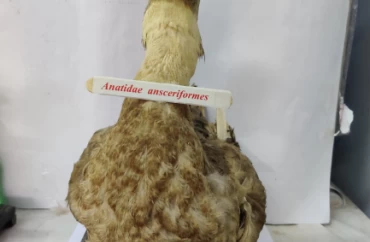
ANATIDAE
• Anseriformes is an order of birds also known as waterfowl that comprises about 180 living species of birds in three families: Anhimidae (three species of screamers), Anseranatidae (the magpie goose), and Anatidae, • the largest family, which includes over 170 species of waterfowl, among them the ducks, geese, and swans. • Most modern species in the order are highly adapted for an aquatic existence at the water surface. With the exception of screamers, males have penises, a trait that has been lost in the Neoaves. Due to their aquatic nature, most species are web-footed.
read more
ANTEDON
• Antedon is commonly known as feather star. • Body consists of a central disc or calyx and a series of five radiating arms. • Central disc is differentiated into an upper oral surface and lower aboral surface. • Oral surface is covered with a soft and leathery skin, the tegmen bearing the central mouth and the anus on a papilla in an inter-radius. • Aboral surface bears several slender curved jointed cirri supported by small ossicles which serve for attachment.
read more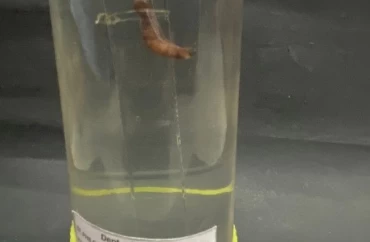
ARENICOLA
• Arenicola is commonly known as lug-worm or lobe-worm. • Body is stout, elongated, cylindrical worm-like measuring up to 20 to 25 cm in length and brownish or greenish in colour. • Body is divisible into three regions, anterior, middle and posterior. • The anus opens through the last segment. • Arenicola is a marine worm, lives in U-shaped burrows of sand and mucus
read more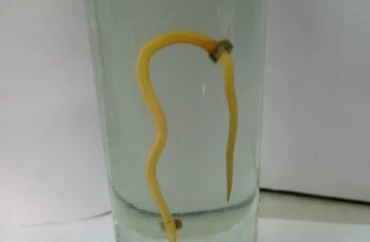
ASCARIS
• Ascaris is commonly known as round worm. • Body is elongated, cylindrical pointed at both ends. • Surface of the body is marked with four longitudinal lines, these are known as mid-dorsal, mid-ventral and two lateral lines. • Mouth is provided with median dorsal and a pair of symmetrical ventral lips. • Excretory pore is small and lies at a distance of 2 mm from anterior end. • Sexes are separate and sexual dimorphism is well marked. • Male is about 15 to 31cm in length with the posterior end curved ventrally.
read more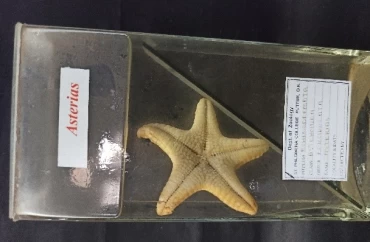
ASTERIAS
• _Asterias _is commonly known as star fish or sea star. • The body is star shaped, consisting of a central disc with five radiating arms which are broad at their base and tapering towards their extremities. • Body surfaces are distinguishable into an oral surface directed downwards and an aboral surface directed up wards. • Mouth is pentagonal and lies in the centre of the disc on oral surface. • Five narrow ambulacral grooves arise from the five corners of the mouth and extend along the middle of the oral surface of five arms up to their margin.
read more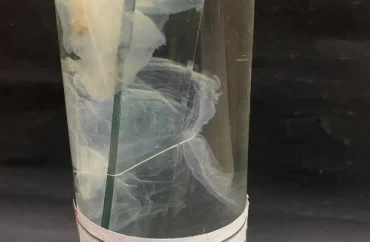
AURELIA
• Aurelia is commonly referred to as jellyfish. • It lives either singly or in large groups found floating or swimming freely. • It is carnivorous and reproduces both by asexual and sexual methods. • It is almost transparent having bluish-white body with pinkish gonads
read more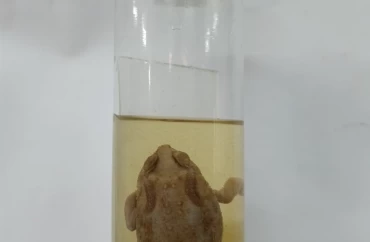
BUFO
• It is commonly called as true-toad. • Skin is rough, dry and warty on the dorsal surface of the body. • Eyes are large and nostrils are very small. Tympanum is very well developed. • Paired parotid glands are present behind the tympanum, these secrete poison fluid. • Teeth are entirely absent. • Bufo is terrestrial and nocturnal in habit. • Carnivorous, feeding on worms, insects, snails, etc.
read more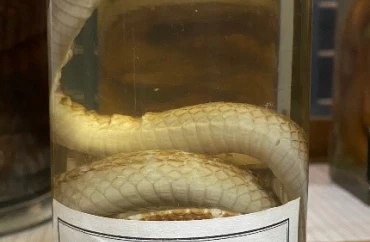
BUNGARUS
• Bangarus is commonly called krait. • Body is elongated and slender, measuring about 1m in length. • Head with normal shields and is not differentiated from neck. • Eyes are moderate size with narrow pupils. • Loreals are absent, oviparous. • Carnivorous, feeding on rats, lizards and snakes. • It is nocturnal in habit and lives in cracks in walls or in heaps of bricks, etc. • It is poisonous and its venom is neurotoxic.
read more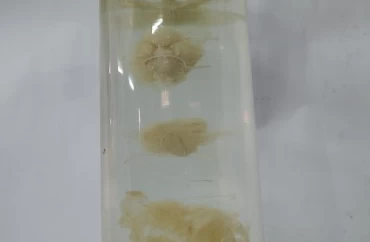
CANCER
• It is commonly known as rock-crab or true-crab. • Body is oval and flattened. • Cephalothorax is frequently much broader than long. • Eye stalks and antennules are contained in sockets of carapace. • Antennules and antennae are small. • Five pairs of thoracic legs are well developed. • Abdomen is greatly reduced and lies permanently flexed in a groove on the very broad thoracic sterna. • It is found buried among rocks or in sand
read more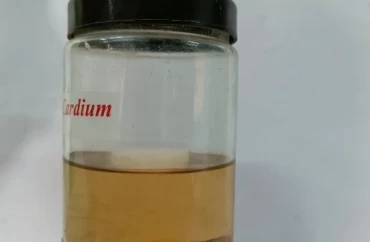
CARDIUM
• A cockle is an edible, marine bivalve mollusc. Although many small edible bivalves are loosely called cockles, true cockles are species in the family Cardiidae. • True cockles live in sandy, sheltered beaches throughout the world. The distinctive rounded shells are bilaterally symmetrical, and are heart-shaped when viewed from the end. • Numerous radial, evenly spaced ribs are a feature of the shell in most but not all genera (for an exception, see the genus Laevicardium, the egg cockles, which have very smooth shells).
read more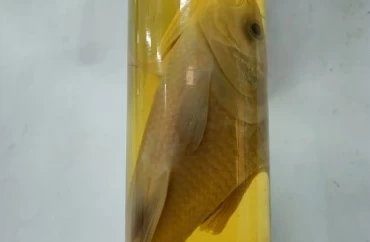
CATLA
• Catla is a fish with large and broad head, a large protruding lower jaw, and upturned mouth. • It has large, greyish scales on its dorsal side and whitish on its belly. It reaches up to 182 cm (6.0 ft) in length and 38.6 kg (85 lb) in weight. • Catla is a surface and midwater feeder. • Adults feed on zooplankton using large gill rakers, but young ones on both zooplankton and phytoplankton.
read more
CHELONE
• Chelone is a marine form commonly known as green turtle, found in the Atlantic, Indian and Pacific Oceans. • It measures from 85- 110 cm in length. • Body is enclosed in a smooth shell. • Dorsal shields are juxtaposed, fitting closely into each other. • Four pairs of costal shields. • Tail is short.
read more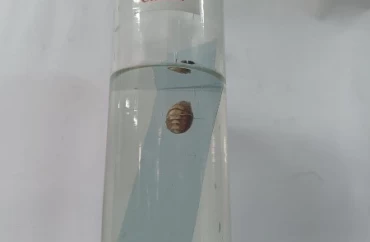
CHITON
• Body of Chiton is elliptical, bilaterally symmetrical and dorsoventrally compressed and consists of shell, foot, mantle and the visceral mass. • Shell is calcareous, side and composed of eight overlapping plates. • Head is small and indistinct. Eyes and tentacles are absent. • Foot is ventral, muscular with a flat sole extending along the whole length of the body. It serves for creeping and adhering to the substratum. • Mouth and anus are at opposite ends.
read more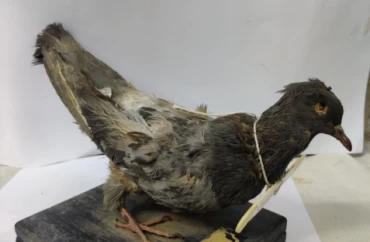
COLUMBA
• _Columba livia _is commonly known as Blue- rock- pigeon. • It is a familiar slaty- grey bird with glistening metallic green, purple and magenta sheen on the neck and upper breast. • Two dark bars on wings and a band across the end of the tail. • It measures about 34 cm in length. • Both the sexes are alike. • Food chiefly comprises cereals, pulses and ground nuts, etc. • The nest is sketchy pad of twigs and straw.
read more
CONUS
• Conus is a genus of predatory sea snails, or cone snails, marine gastropod mollusks in the family Conidae. • Prior to 2009, cone snail species had all traditionally been grouped into the single genus Conus. However, Conus is now more precisely defined, and there are several other accepted genera of cone snails. • Species in the genus Conus sensu stricto can be found in the tropical and subtropical seas of the world, at depths ranging from the sublittoral to 1,000 m. They are very variable in some of their characters, such as the tuberculation of the spire and body whorl, striae, colours and the pattern of colouring. • Many fossil species have been described; they are extensively distributed, and first appear in Cretaceous strata.
read more
DENTALIUM
• Dentalium is commonly known as tusk shell. Since the shell of Dentalium resembles miniature elephant tusks, therefore, it is called elephant’s tusk shell. • Body is bilaterally symmetrical and enclosed in a tubular shell open at both ends. • Mantle folds are fused ventrally to form a tube enclosing the body. • Head is vestigial, bearing the mouth which is surrounded by a circlet of retractile tentacles, the captacula with sucker-like ends. • Foot is long and conical, protrudes through the anterior opening of the shell and is used in burrowing.
read more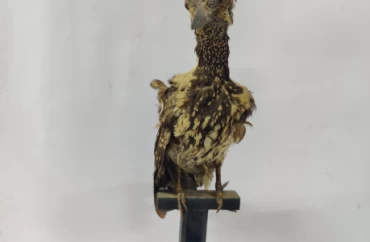
DINOPIUM
• Dinopium is commonly known as Golden- backed woodpecker. • It is a small bird and is about 22 cm in length. • The bill is long, stout and pointed. • The entire crown and occipital crest is crimson in male only partly so in the female. • The tail is stiff and wedge shaped. • Food chiefly comprises wood- boring beetles, grubs, ants and other insects injurious to trees.
read more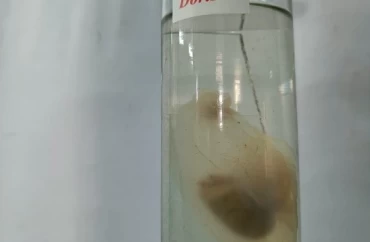
DORIS
• Doris is a genus of sea slugs, specifically dorid nudibranchs. These animals are marine gastropod molluscs in the family Dorididae. • Doris odhneri is a species of sea slug, a dorid nudibranch, a shell-less marine gastropod mollusk in the family Dorididae. • It is known by many common names, such as: giant white nudibranch, giant white dorid, and white-knight nudibranch. • It is also often referred to as Odhner’s droid to honour Nils Hjalmar Odhner, the scientist it is named after.
read more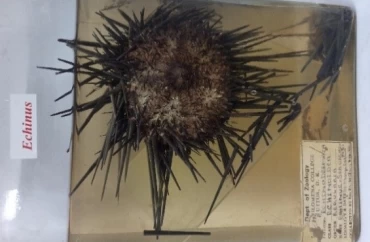
ECHINUS
• Echinus is commonly known as Sea urchin. • Body is globular in shape, somewhat flattened at the two poles forming distinct oral and aboral -poles. • Body is enclosed in a rigid globular shell formed of closely fitted calcareous plates. • Entire surface of the animal except the peristome and periproct is covered with spines articulated to the shell. • Pedicellariae with three jaws and sphaeridia are present among the spines.
read more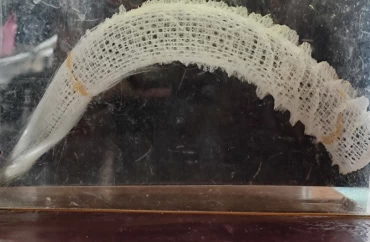
EUPLECTELLA
• Euplectella is a genus that comprises marine sponges. • They are also known as glass sponges due to the presence of siliceous spicules. • They are found abundantly in marine water, deep in the ocean. • Their body is curved, tubular, basket-like, or vase shaped. • They are found in symbiotic association with shrimps and also given as a wedding gift in Japan- symbolizing togetherness till death.
read more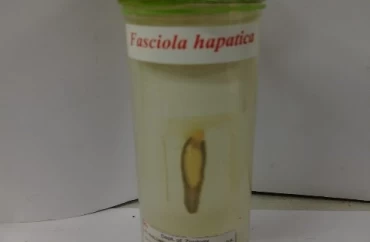
FASCIOLA
• Fasciola is commonly known as liver fluke. • Body is leaf-like, dorso-ventrally flattened measures 25-30 min in length and 4-5 mm in breadth. • Anterior end is small and conical, while the posterior end is large more rounded in front than behind. • An oral sucker is situated apically and a larger highly muscular ventral sucker (acetabulum) is located a little posterior to the oral sucker. • Fasciola hepatica is found as an endoparasite in the bile ducts of liver of sheep
read more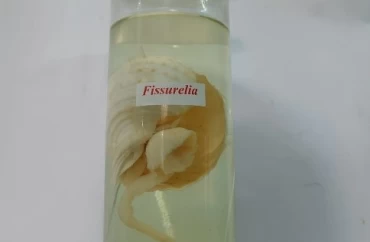
FISSURELIA
• The size of the body does not exceed or marginally exceeds that of the shell. • The outer radular plate has four cusps. • The propodium (the anterior end of the foot) has no tentacles. • Like all other fissurellidae, Fissurella species are herbivores, using the radula to scrape up algae from the surface of rocks. • Water for respiration and excretion is drawn in under the edge of the shell and exits through the “keyhole” at the apex.
read more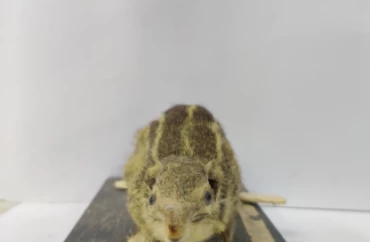
FUNAMBULUS
• Funambulus is commonly called Squirrel. • Body is elongated and covered with fur. • Five longitudinal stripes of dark color are present on the back. • Tail is long and bushy. • The eyes and pinnae or ears are large. • The fore limbs have an inconspicuous thumb and hind limbs have 4 clawed digits. • The soles of fore limbs are naked and those of hind limbs are hairy. • Arboreal and active climber feeds on nuts, seeds and fruits. • Diurnal and builds nests of twigs and leaves.
read more
FUNGIA
• It is commonly known as mushroom coral. • It is of large size, with discoidal corallite, convex on the upper and concave on the lower surface. • Septa are numerous and connected together by small synaptacula. • Theca is present only on the lower surface. • Adult animal bears a single large polyp with many tentacles.
read more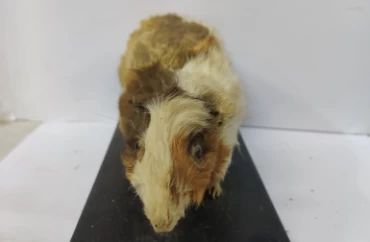
GUINEA PIG
• The guinea pig, also known as the cavy or domestic cavy, is a species of rodent belonging to the genus Cavia in the family Caviidae. • Breeders tend to use the word cavy to describe the animal, while in scientific and laboratory contexts, it is far more commonly referred to by the common name guinea pig. • They originated in the Andes of South America.
read more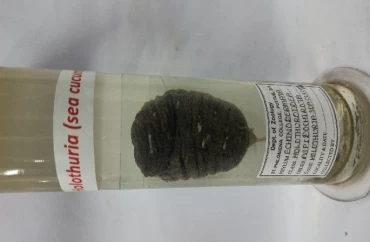
HOLOTHURIA
• Holothuria pervicax is a species of sea cucumber in the genus Holothuria. • The sea cucumber has been described as widely spread and has been found in much of the pacific. • The cucumber was first described by Selenka in 1867 • The cucumber is capable of expelling a relatively large number of cuvierian tubules if disturbed, and is considered toxic if eaten.
read more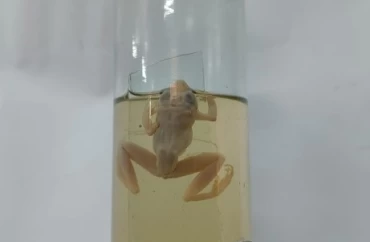
HYLA
• The mating systems across most species of Hyla largely feature female choice based on male calling effort. • Usually reddish brown in colour, but colour can vary greatly. • The best way to identify this species is by the light coloured, usually orange, yellow or whitish spots on the rear of the thigh. Light coloured spots on the rear of the thigh. • They are found close to marshes, swamps, ponds. Like other frogs, fertilization is external. Eggs are laid under water surface and are attached to roots of floating vegetation.
read more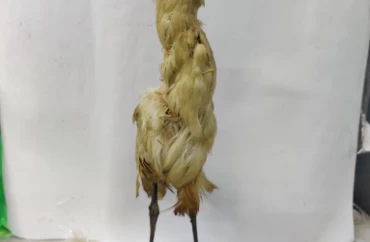
INTERMEDIATE EGRET
• Intermediate egret or median egret is a resident breeder of the Indian subcontinent, in size between the great and little egret • The egret with long neck and large body is a medium-sized heron, entirely white in color yellow beak
read more
LIMAX
• Limax is a genus of air-breathing land slugs in the terrestrial pulmonate gastropod mollusk family Limacidae. The generic name Limax literally means “slug”. • Some species, such as the leopard slug (L. maximus) and the tawny garden slug (Limacus flavus), are considered serious garden pests. • The genus Limax sensu stricto is probably monophyletic. This genus is native to Europe, but at least one species (L. maximus) has been introduced into North America.
read more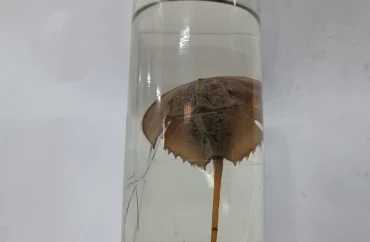
LIMULUS
• Limulus is commonly known as king-crab. • Body consists of anterior prosoma and a posterior opisthosoma terminating in a long spike-like telson. • Prosoma is covered by an unsegmented, semi-circular, or horse-shoe-shaped carapace. • Prosoma is convex above with sloping sides and bears three longitudinal ridges one median and two laterals. • A pair of simple median eyes and a pair of lateral compound eyes are placed on the dorsal surface of prosoma.
read more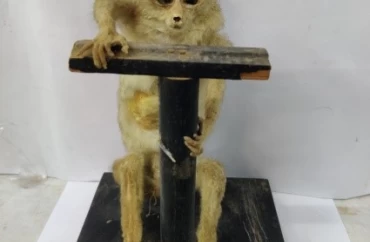
LORIS
• The body of Loris is covered with thick and wooly brownish fur having a silvery look. • The head is fox like and is produced into a pointed muzzle. • The eyes are closely placed, bulging and distinct. • The pinna or external ear is short and conical. • The nostrils are in the form of small apertures. • Dentition is primitive and they have 36 teeth. • The lips are adherent to the gums and are not protrusible. • The tail is long but not prehensile. • They are primitive nocturnal and well adapted for an arboreal life. • They eat fruits or small animals.
read more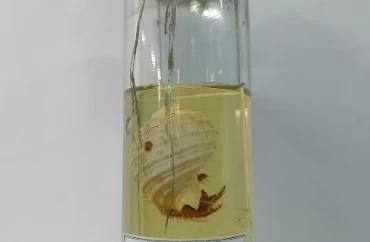
LYMNAEA
• Lymnaea is a genus of small to large-sized air-breathing freshwater snails, aquatic pulmonate gastropod mollusks in the subfamily Lymnaeidae ( of the family Lymnaeidae, the pond snails. • Some species are used in aquaculture under the name Melantho snails. • Numerous Lymnaea species serve as intermediate hosts for trematodes. • Lymnaea is the type genus of the family Lymnaeidae.
read more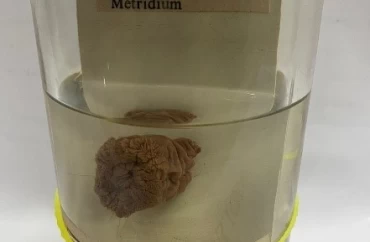
METRIDIUM
• Metridium is commonly known as sea anemone. • Body is short, cylindrical and radially symmetrical, divisible into three distinct regions, pedal disc, column and oral disc. • Pedal disc is muscular broad base or foot by which it is attached to the substratum. • Column is differentiated into two portions a distal thin-walled short capitulum and a proximal thick-walled scapus by a groove and collar.
read more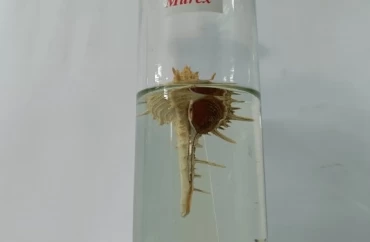
MUREX
• Murex is a genus of medium to large sized predatory tropical sea snails. • These are carnivorous marine gastropod molluscs in the family Muricidae. • The common name murex is still used for many species in the family Muricidae which were originally given the Latin generic name Murex in the past, but have more recently been regrouped into different newer genera. • The word murex was used by Aristotle in reference to these kinds of snails, thus making it one of the oldest classical seashell names still in use by the scientific community
read more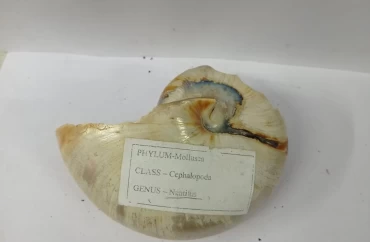
NAUTILUS
• Nautilus is commonly called pearly nautilus. • Body is enclosed in a calcareous spirally coiled many chambered shell. The shell is about 25cm in diameter. • The texture of the shell is porcelain-like white, the outer surface is brown with dark bands and the inner lining is pearly white. • The animal occupies the outermost and largest chamber into which body can be withdrawn for protection. • The chambers are separated by a system of septa.
read more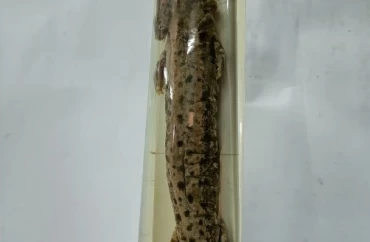
NECTURUS
• Necturus is a genus of aquatic salamanders native to the eastern United States and Canada. They are commonly known as waterdogs and mudpuppies. • The common mudpuppy (N. maculosus) is probably the best-known species – as an amphibian with gill slits, it is often dissected in comparative anatomy classes. The genus is under scrutiny by herpetologists. • The relationship between the species is still being studied. In 1991 Collins elevated N. maculosus louisianensis to full species status, usually considered a subspecies of the common mudpuppy (N. maculosus), but his interpretation was not largely followed
read more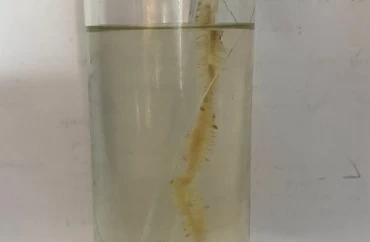
NEREIS
• Nereis is commonly known as rag worm or clam worm. • The body is long, slender and dorso-ventrally flattened reaching a length of 5-30 cm. • The body consists of a distinct head followed by a number of similar segments. • Head consists of two parts: a roughly triangular anterior lobe, the prostomium and a posterior ring-like portion, the peristomium. • Sexes separate.
read more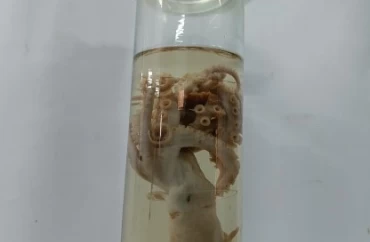
OCTOPUS
• Octopus is popularly known as devil-fish. • Body is globose and bag-like with large head and trunk region. • Head bears a pair of eyes and eight elongated equal arms webbed at the base which surrounded the month. • Each arm bears suckers arranged in two rows. Suckers are sessile and large. • Shell is absent. • Mantle encloses the mantle cavity and the visceral mass. • Octopus produces inky-fluid, which diffuses in water and forms a smoky screen for defence from the enemies.
read more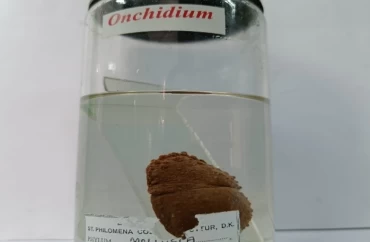
ONCHIDIUM
• Onchidium is a genus of air-breathing sea slugs, shell-less marine pulmonate gastropod mollusks in the family Onchidiidae. • There are only four species currently recognized in the genus. Onchidium multi notatum, originally described within the genus in 1883, is regarded as a nomen dubium
read more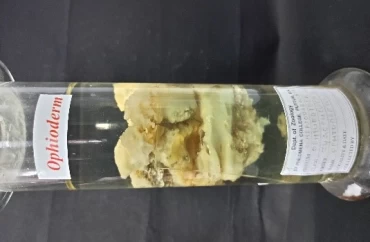
OPHIODERM
• It is commonly known as “brittle star” and is found in shallow sea-waters. It is usually green in colour. • Body comprises of a distinct pentagonal disc and 5 narrow flexible jointed and slender arms radiating from it. • Animal has a distinct oral and an aboral surface. • Disc on the aboral surface bears distinct and large shields or scales which according to their position are categorized into radial, adradial and dermal shields.
read more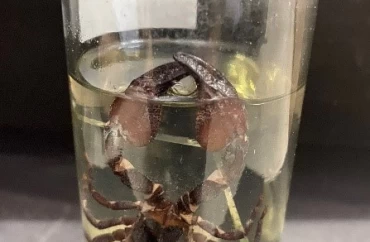
PALAMNAEUS
• Palamnaeus is commonly known as scorpion. • Body is elongated, segmented and divisible into anterior prosoma (cephalothorax), middle mesosoma and posterior metasoma. • Prosoma is six segmented and bears a pair of median eyes, 2-5 pairs of lateral eyes and six pairs of appendages. • Mesosoma is seven segmented. • Metasoma composed of five segments without appendages. • Last segment of metasoma bears a sting consisting of an ampulla and a spine. • Sexes are separate.
read more
PERIPATUS
• Peripatus is a connecting-link between Annelida and Arthropoda. • Body of Peripatus is elongated, cylindrical caterpillar like without external segmentation, measuring 1.5 to 15.00 cm in length. • Trunk bears a series of paired short stumpy appendages, which vary in number 14 to 43 pairs. • Anus lies at the posterior end of the body and behind the last pair of legs. • Sexes are separate. • Peripatus is nocturnal, lives in crevices of rocks, under bark and stones and in other dark moist places and beneath fallen leaves.
read more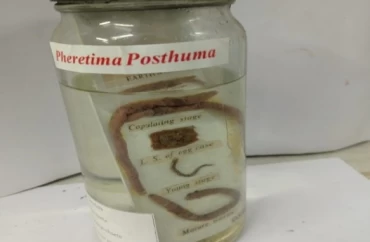
PHERETIMA
• Pheretima is commonly known as earthworm. • Body is long, narrow and cylindrical measuring up to 150 mm in length, brown in colour. • Anterior end is pointed, while the posterior end is more or less blunt. • Body is divided by circular furrows into a series of 100 to 120 ring-like segments or metameres. • Each segment (except the first and last) is provided with setae. Pheretima is found in moist soil.
read more
PILA
• Pila globosa is one of the largest freshwater molluscs, found in freshwater ponds, pools, tanks, lakes, marshes, rice fields and sometimes even in streams and rivers. • They occur in those areas where there is a large amount of aquatic vegetation like Vallisneria, Pistia, for food. They are amphibious, being adapted for life in water and on land. • The movement of the animal is like the gliding movement of a planarian. • It can overcome long periods of drought in a dormant condition and buried in the mud; this period of inactivity is called aestivation or summer sleep.
read more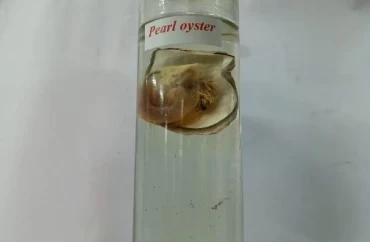
PINCTADA
• Pinctada is a genus of saltwater oysters, marine bivalve mollusks in the family Pteriidae. These pearl oysters have a strong inner shell layer composed of nacre, also known as “mother of pearl”. • Pearl oysters are not closely related to either the edible oysters of family Ostreidae or the freshwater pearl mussels of the families Unionidae and Margaritiferidae. • Pinctada margaritifera and P. maxima are used for culturing South Sea and Tahitian pearls. They are cultured widely primarily in the central and eastern Indo-Pacific. A pearl oyster can be seen on the reverse side of the 1,000-peso note of the Philippines.
read more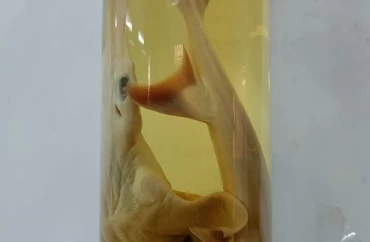
PRISTIS
• _Pristis _is a genus of sawfish of the family Pristidae. • These large fish are found worldwide in tropical and subtropical regions in coastal marine waters, estuaries, and freshwater lakes and rivers. • Sawfish have declined drastically and all species are considered seriously threatened today • The longcomb sawfish is possibly the largest species of sawfish, reaching a total length of up to 7.3 m (24 ft), but rarely more than 6 m (20 ft) today. Its upperparts are greenish-brown to olive, while the underparts are whitish
read more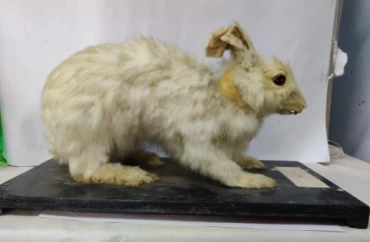
RABBIT
• White It is a meat type rabbit developed in California from Himalayan and Standard Chinchilla cross. • F-1 male was crossed with NZW female to develop this. • Adult buck and doe weighs 3.6 - 4.5 and 3.9 - 4.8 kg respectively. • The colour is all white with black, chocolate, blue or lilac nose, ears, feet, and tail.
read more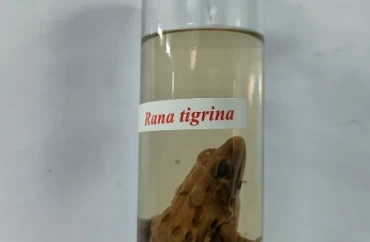
RANA
• Rana tigrina refers specifically to the Indian bullfrog or Asian Bullfrog due to their population distribution in areas such as Bangladesh, India, Myanmar, Nepal, etc. • The trunk is provided with a pair of fore and hind limbs. The fore limbs are shorter and stouter, end in four digits. • The hind limbs are much larger and muscular than the fore limbs, end in five digits. The male and female frogs can be differentiated externally. • The dorsal surface of frog is spotted olive green and ventral pale yellow; this protective colouration help to camouflage i.e. escape the detection by enemies.
read more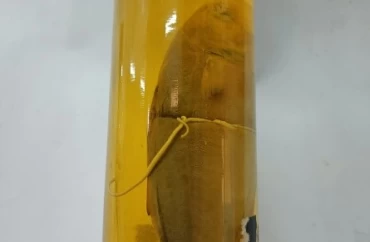
RASTRELLIGER
• Mackerel species typically have vertical stripes on their backs and deeply forked tails. • Many are restricted in their distribution ranges and live in separate populations or fish stocks based on geography. • Some stocks migrate in large schools along the coast to suitable spawning grounds, where they spawn in fairly shallow waters. • After spawning they return the way they came in smaller schools to suitable feeding grounds, often near an area of upwelling.
read more
RHACOPHORUS
• It is commonly known as flying frog. • The body is slender and divided into head and trunk. • Limbs are long and thin with large feet. • Web develops between the digits of all the four feet and all feet bear rounded adhesive pads or discs. • It lives on trees and large webbed feet are used as palms in gliding from tree to tree. • It also exhibits parental care by depositing eggs in the nests near water.
read more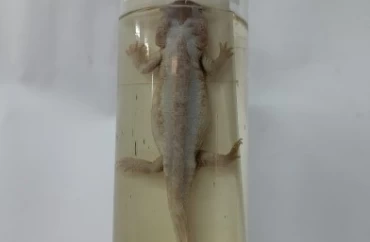
SALAMANDRA
• Salamanders are a group of amphibians typically characterized by their lizard-like appearance, with slender bodies, blunt snouts, short limbs projecting at right angles to the body, and the presence of a tail in both larvae and adults. • The skin lacks scales and is moist and smooth to the touch • Salamanders range in size from the minute salamanders, with a total length of 27 mm (1+1⁄8 in), including the tail, to the Chinese giant salamander which reaches 1.8 m (6 ft) and weighs up to 65 kg. • Their permeable skin usually makes them reliant on habitats in or near water or other cool, damp places.
read more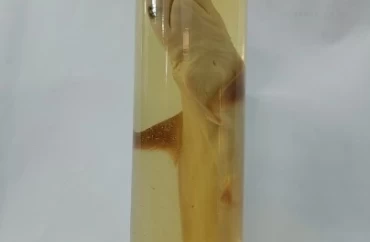
SCOLIODON
• Scoliodon has an elongated, spindle-shaped body tapered at the ends, making it a very fast swimmer. The trunk and tail are laterally compressed, while the head region is dorsoventrally compressed. • The entire body is covered by an exoskeleton of placoid scales. The mouth is located on the ventral side and is bound on both sides by jaws. • It has two rows of homodont or polyphyodont teeth, which are homologous to the placoid scales covering the body. Male Scoliodon species mature at a length of 33 cm while female Scoliodon species mature at 36 cm.
read more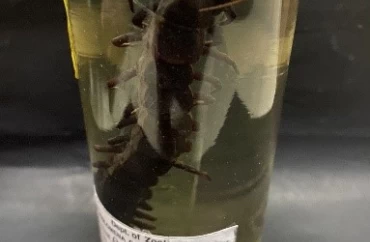
SCOLOPENDRA
• Scolopendra is commonly called centipede. • Body is elongated, dark greenish brown in colour, and dorsoventrally flattened with numerous segments. • Body is divisible into head and trunk. • Head is distinct and bears a pair of antennae, a pair of mandibles and two pairs of maxillae. • Each trunk segment from 2-22 carries one pair of walking legs. • First pair of trunk appendages or maxillipeds bears a sharp claw connected with the poison gland. • Sexes are separate.
read more
SEA URCHIN
• Regular sea urchins have a pentaradially symmetrical test composed of ten double columns of plates, five interambulacral zones and five ambulacral zones, which together make up the corona. • Ambulacral zones are made of plates that are pierced by single or double pores for the tube-feet. • These pore-pairs are situated along the outer (adambulacral) margins of the ambulacral zone. • The central suture line between the two columns of plates in each ambulacral zone is the perradial suture line.
read more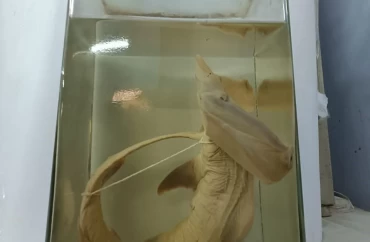
SPHYRNA
• The smooth hammerhead (Sphyrna zygaena) is a species of hammerhead shark, and part of the family Sphyrnidae. • This species is named “smooth hammerhead” because of the distinctive shape of the head, which is flattened and laterally extended into a hammer shape (called the “cephalofoil”), without an indentation in the middle of the front margin (hence “smooth”). • Unlike other hammerheads, this species prefers temperate waters and occurs worldwide at medium latitudes.
read more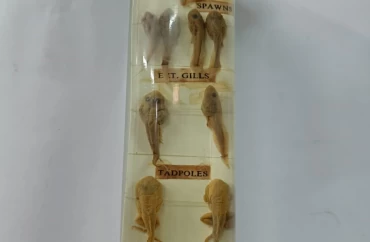
STAGES OF FROG DEVELOPMENT
Stage 1: Egg • Many species lay their eggs in calm water among vegetation, where the eggs can develop in relative safety. • The female frog lays numerous eggs in masses that tend to clump together in groupings known as spawn. • As she deposits the eggs, the male releases sperm onto the eggs and fertilizes them. Stage 2: Tadpole (Larva) • Tadpoles, frogs’ larvae, have rudimentary gills, a mouth, and a long tail. • For the first week or two after the tadpole hatches, it moves very little. • During this time, the tadpole absorbs the remaining yolk left over from the egg, which provides much-needed nourishment. • After absorbing the yolk, the tadpole is strong enough to swim on its own. Stage 3: Adult • At approximately 12 weeks of age, the tadpole’s gills and tail have been fully absorbed into the body, meaning that the frog has reached the adult stage of its life cycle. • It is now ready to venture out onto dry land and, in time, repeat the life cycle.
read more
TAENIA
• Taenia is commonly known as tapeworm. • Body consists of scolex or head, neck and strobila or body segments. • Scolex is smaller than the head of a pin, about I mm in diameter. It is the organ of attachment, bears four suckers and a rostellum which has a double circlet of hooks about 28 to 32 in number. • Behind the scolex is a thin unsegmented neck. • Strobila or body consists of large number of segments about 800 or more in number. Each segment is termed a proglottid.
read more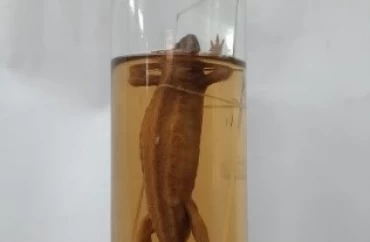
TRITON
• Triturus is a genus of rather large-bodied newts. • They typically have a total length of between 10 and 16 cm (3.9 and 6.3 in), with some crested newts of up to 20 cm (8 in) described. Size depends on sex and the environment: females are slightly larger and have a proportionally longer tail than males in most species. • Their belly is yellow to orange with black blotches, forming a pattern characteristic for individuals. Females and juveniles of some species have a yellow line running down their back and tail. • Triturus species are carnivorous and feed mainly on invertebrates.
read more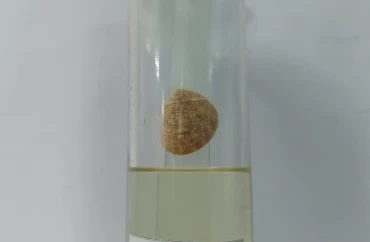
TROCHUS
• Trochus is a genus of medium-sized to large, top-shaped sea snails with an operculum and a pearly inside to their shells, marine gastropod molluscs in the family Trochidae, the top snails. • When the word “trochus” or “Trochus” is used in reference to fishing sea snails for commercial purposes, the usual species targeted is Tectus niloticus, which is valued for its nacre or mother of pearl layer, which was traditionally made into items such as pearl buttons and jewellery. • Tectus niloticus is no longer classified as a Trochus species, and it is no longer classified in the family Trochidae; it is now placed in the family Tragulidae.
read more

